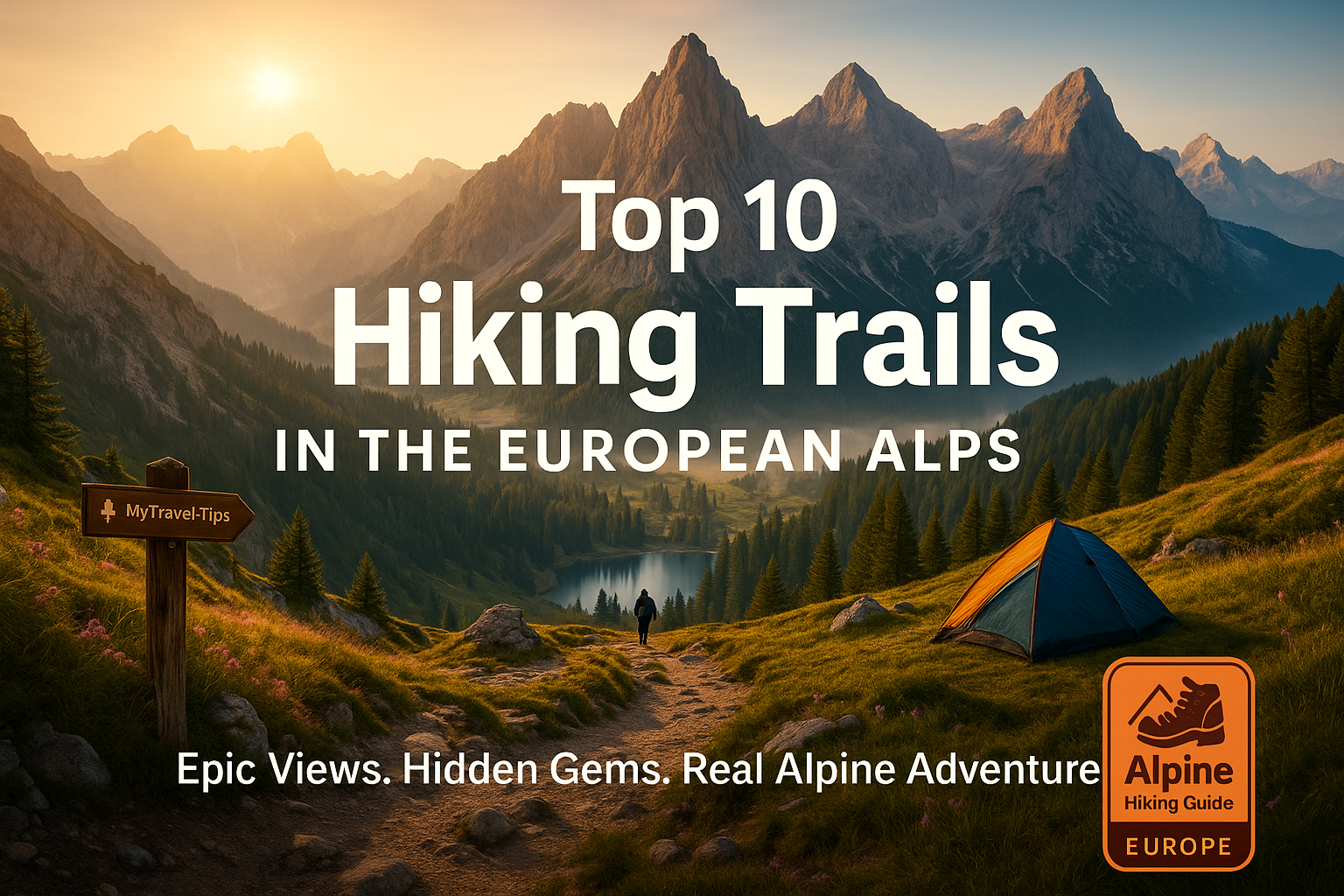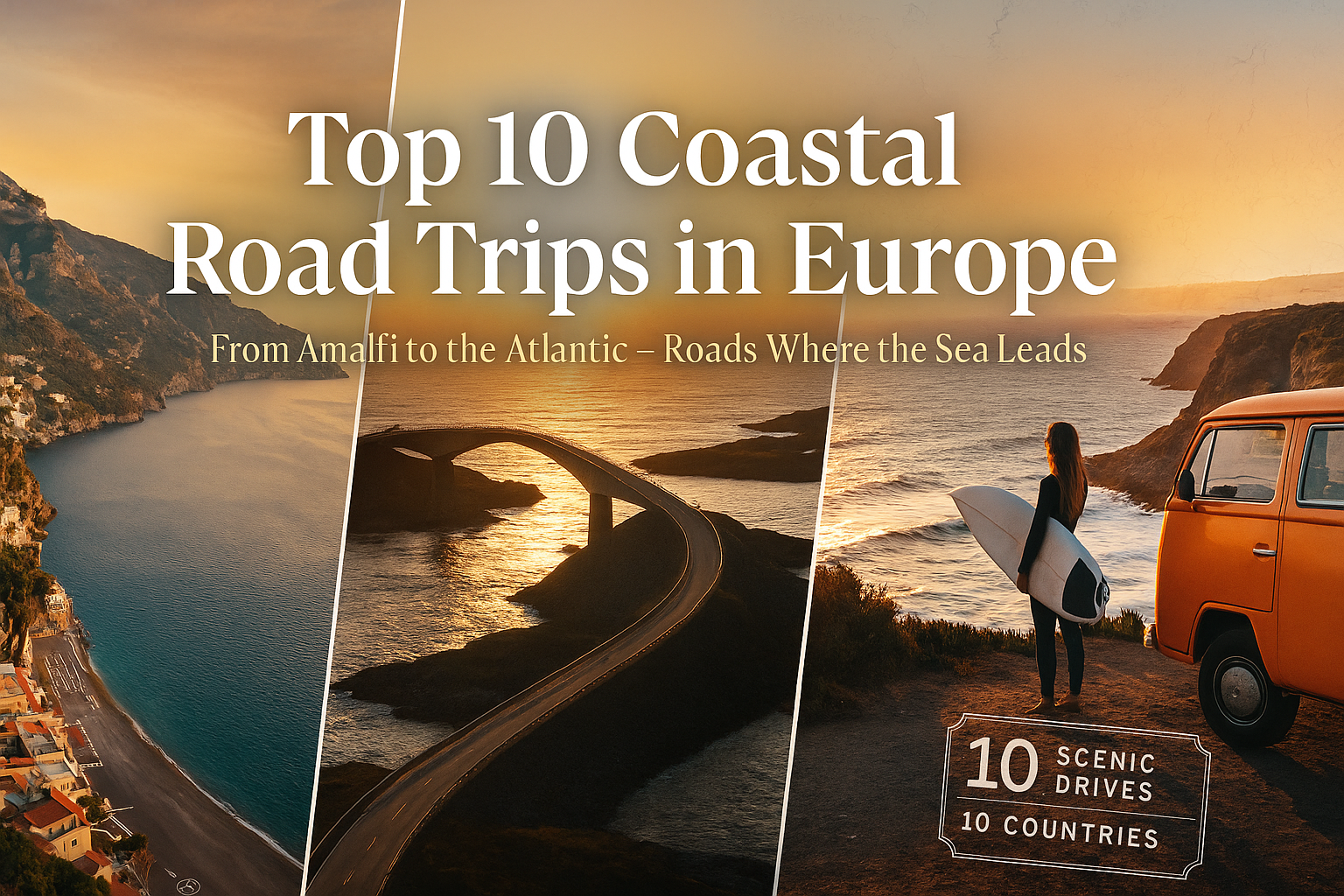Top 10 Free Camping Spots in Europe for Wild Adventurers
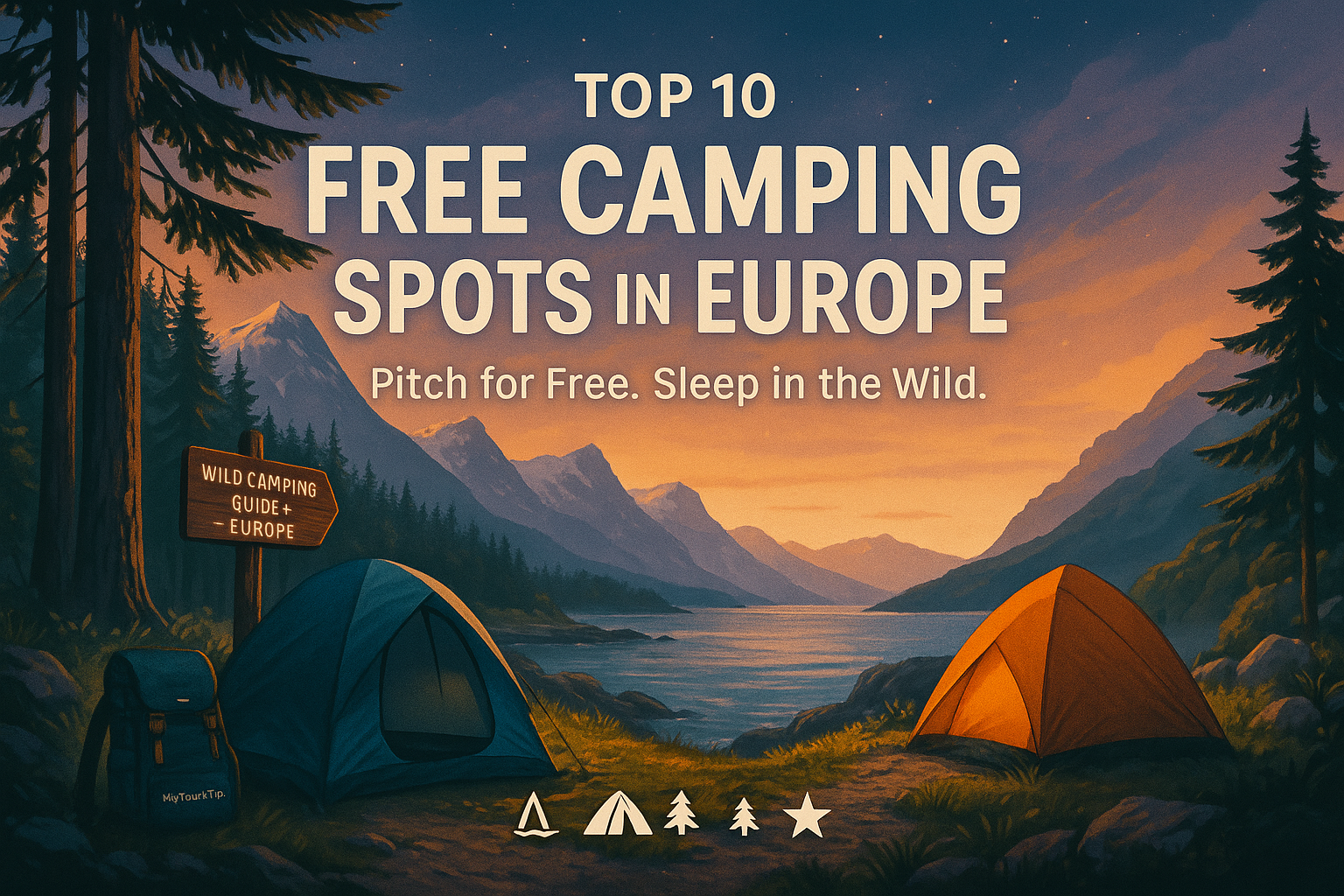
Top 10 Free Camping Spots in Europe
If you dream of waking up to alpine lakes, coastal cliffs, or deep forest silence — all without paying a cent — you're in the right place. Europe is home to dozens of breathtaking free camping spots that reward budget travelers and outdoor lovers alike. From Norway’s Right to Roam to Portugal’s hidden nature havens, this guide uncovers the top 10 wild and legal camping spots in Europe where you can pitch your tent without a fee.
Whether you're planning a long budget backpacking trip or a minimalist road trip along scenic coasts, this list blends beauty, accessibility, and adventure — all without breaking the bank.
🔎 Explore the Top Wild Campsites – Clickable TOC
- #10 – Vintgar Gorge Forest Site, Slovenia
- #9 – Glen Etive Valley, Scotland
- #8 – Sierra de Gredos, Spain
- ️#7 – Lofoten Islands Wild Spots, Norway
- #6 – Plage de Saleccia, Corsica
- ️#5 – Bohuslän Archipelago, Sweden
- ️#4 – Lake Ritsa National Reserve, Georgia (Europe)
- #3 – Pindus National Park, Greece
- #2 – Rila Mountains, Bulgaria
- #1 – Jotunheimen National Park, Norway
Note: Always follow Leave No Trace principles, local laws, and respect nature when wild camping. Free doesn’t mean careless — nature gives, we protect.
10 – Vintgar Gorge Forest Site, Slovenia
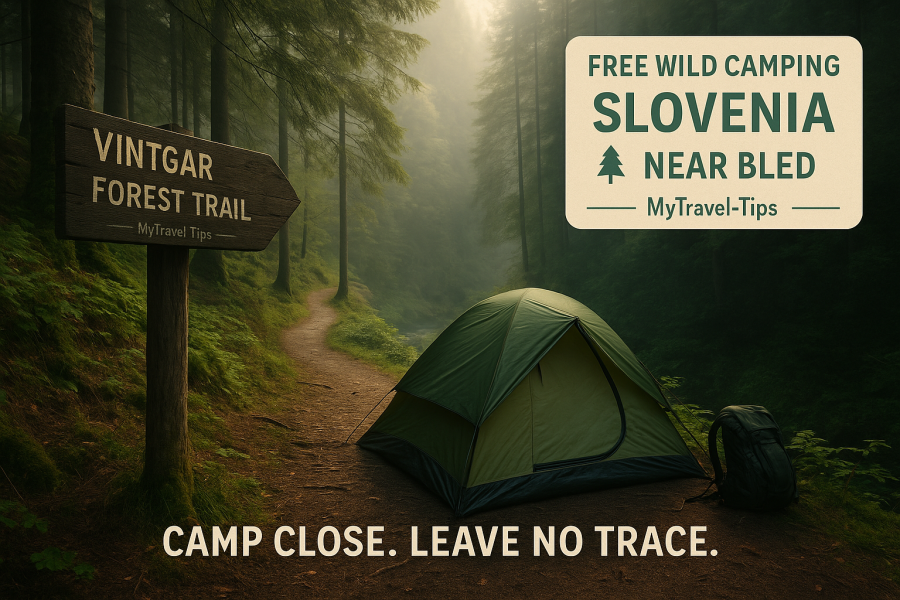
Just a few kilometers from Bled, the lush forest trail leading to Vintgar Gorge hides a peaceful, unofficial wild camping area used by experienced hikers and cyclists. Nestled in a pine forest and close to the Radovna River, it’s one of the easiest places to experience Slovenia’s natural beauty without entering a paid campsite.
- Location: Near Podhom village, ~4 km from Lake Bled
- Access: By bike, foot, or car (small gravel road)
- Best For: Hikers, budget backpackers, Bled overnighters
- Key Tip: Camp only at dusk and leave early — Slovenia has strict national park rules
While technically not an official camping zone, this forested area is often tolerated by locals and authorities as long as campers are respectful and leave no trace. It’s a quiet place to enjoy the stars, a nearby stream, and proximity to popular spots like Lake Bled without tourist prices.
💡 Travel Tip: Pair this free camping spot with a visit to Lake Bled and Vintgar Gorge trail early morning — both get crowded later in the day.
9. Glen Etive Valley, Scotland
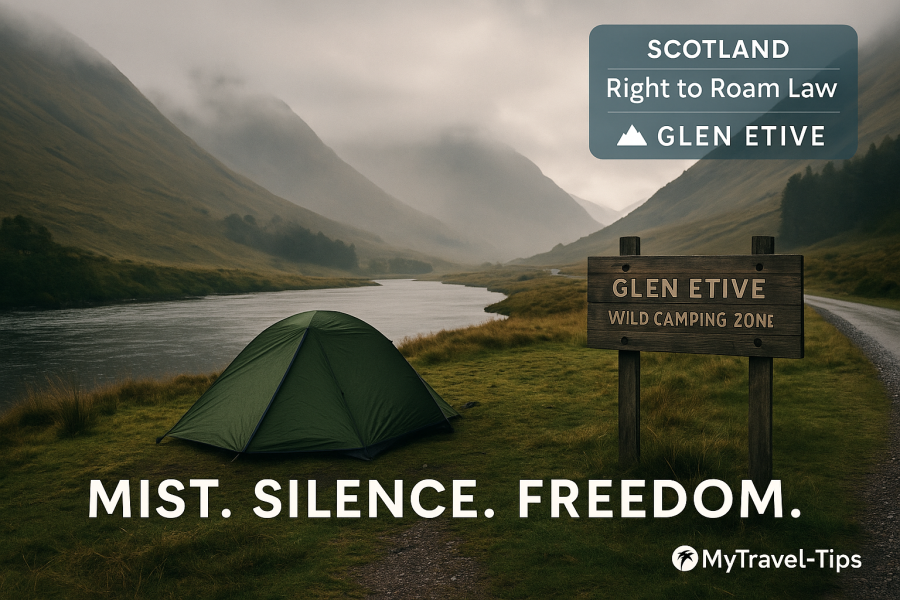
Nestled deep in the Scottish Highlands, the Glen Etive Valley offers one of the most iconic and legally permitted wild camping experiences in the UK. Made famous by James Bond’s Skyfall, this valley runs off the A82 just before Glencoe and rewards campers with misty mountains, peaceful lochs, and complete solitude.
- Location: Glen Etive road off A82, near Glencoe, Scotland
- Access: By car or bike — narrow scenic road into the valley
- Best For: Nature photographers, hikers, vanlifers
- Legal Note: Wild camping is permitted under Scotland’s Right to Roam law
With small flat areas beside the river and mountains rising on all sides, Glen Etive feels untouched. Wild campers often spot deer, hear owls at night, and witness moody Highland weather. There are no facilities, so come prepared — and pack everything out.
💡 Travel Tip: Avoid weekends if possible. The road can get crowded with campervans during peak summer months.
8. Sierra de Gredos, Spain
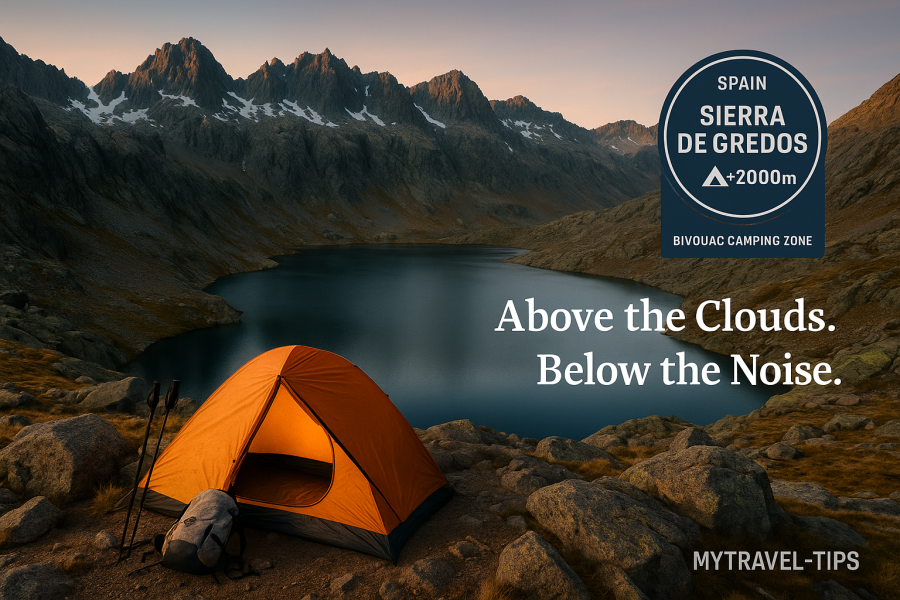
Tucked in central Spain’s rugged interior, the Sierra de Gredos mountains are a haven for free-spirited hikers and wild campers. Known for its granite peaks, crystal-clear mountain streams, and wild goats, this protected area offers dispersed camping with stunning views — especially near Circo de Gredos and Laguna Grande.
- Location: Castilla y León region, west of Madrid
- Access: Trailhead from Hoyos del Espino or Plataforma de Gredos
- Best For: Mountain lovers, stargazers, solo backpackers
- Camping Rules: Bivouac-style camping allowed above 2,000m from sunset to sunrise
While traditional tent camping is restricted during the day, overnight bivouac camping is permitted under Spanish park rules — just arrive late and leave early. The silence, star-filled skies, and dramatic rocky backdrop make it a top free destination for those seeking raw wilderness.
💡 Travel Tip: Bring layers — even in summer, night temperatures in the Sierra can drop close to freezing at high altitude.
7. Lofoten Islands Wild Spots, Norway
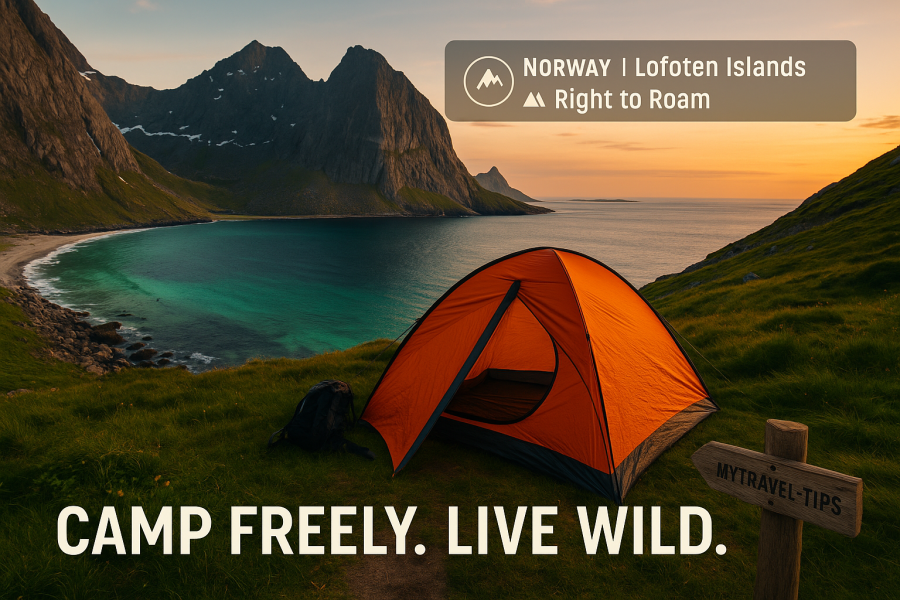
The majestic Lofoten Islands in northern Norway are among Europe’s most dreamlike wild camping destinations. With the legal right to roam firmly protected, campers can pitch a tent nearly anywhere outside private property — from sea cliffs to arctic beaches, fjords, and even behind a fishing village.
- Location: Nordland county, Norway – Arctic Circle
- Access: Fly to Leknes or drive scenic E10 coastal route
- Best For: Photographers, solo travelers, vanlife explorers
- Wild Camping Law: Protected under Norway’s Allemannsretten (Right to Roam)
Popular wild camping spots include Haukland Beach, Uttakleiv, and Reinefjorden viewpoints. Campers are welcome to stay one or two nights in most non-enclosed areas, as long as they respect local nature and leave no trace. Midnight sun in summer makes it even more magical.
💡 Travel Tip: Wild camping is legal, but avoid sensitive farmland and always camp at least 150m from houses or cabins.
6. Plage de Saleccia, Corsica
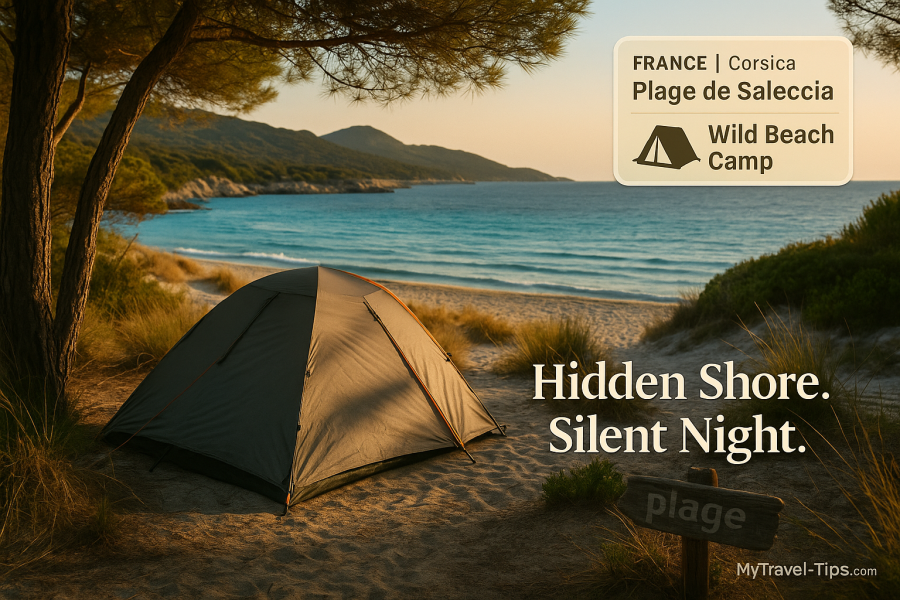
Hidden behind pine forests and accessible only by boat or 4x4, Plage de Saleccia is one of Corsica’s most beautiful and secluded beaches — and also a favorite for discreet wild campers. Located in the Désert des Agriates, this remote paradise offers white sands, turquoise waters, and peaceful nights under the stars.
- Location: Northern Corsica, near Saint-Florent
- Access: 4x4 track from Casta or boat taxi from Saint-Florent
- Best For: Beach campers, nature purists, summer off-grid seekers
- Camping Note: Technically discouraged but tolerated if low impact and short stay
There are no facilities, lights, or nearby towns — so you’ll need to bring water, food, and a respectful mindset. Rangers patrol occasionally, but responsible wild camping in the pine zone behind the beach is often allowed for 1–2 nights.
💡 Travel Tip: Avoid camping on the sand. Set up behind the dunes under pine shade to reduce impact and wind exposure.
5. Bohuslän Archipelago, Sweden
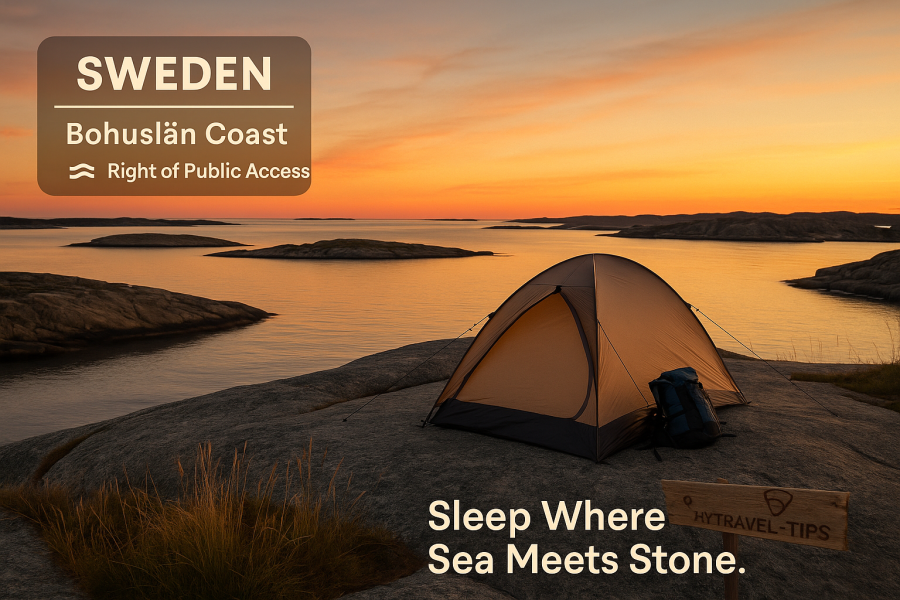
Along Sweden’s west coast lies the stunning Bohuslän Archipelago — a rugged maze of granite islands, fishing villages, and remote coves. Thanks to Sweden’s Allemansrätten (Right of Public Access), you can legally camp on uncultivated land for one night, including many of these wild coastal spots.
- Location: Stretching from Gothenburg to the Norwegian border
- Access: Public ferries, kayaking routes, or road bridges to outer islands
- Best For: Island hoppers, nature kayakers, Nordic campers
- Camping Rule: One-night stays allowed on unfenced, wild land away from homes
Remote islands like Ängholmen, Orust, or Tjörn offer dramatic sunset views and total solitude — perfect for a minimalist night by the sea. Campers must respect nesting areas and avoid private docks or cultivated lands.
💡 Travel Tip: Consider renting a kayak to access tiny uninhabited islets for the ultimate wild camping freedom — no roads, no noise, just you and the sea.
4. Lake Ritsa National Reserve, Georgia (Europe)
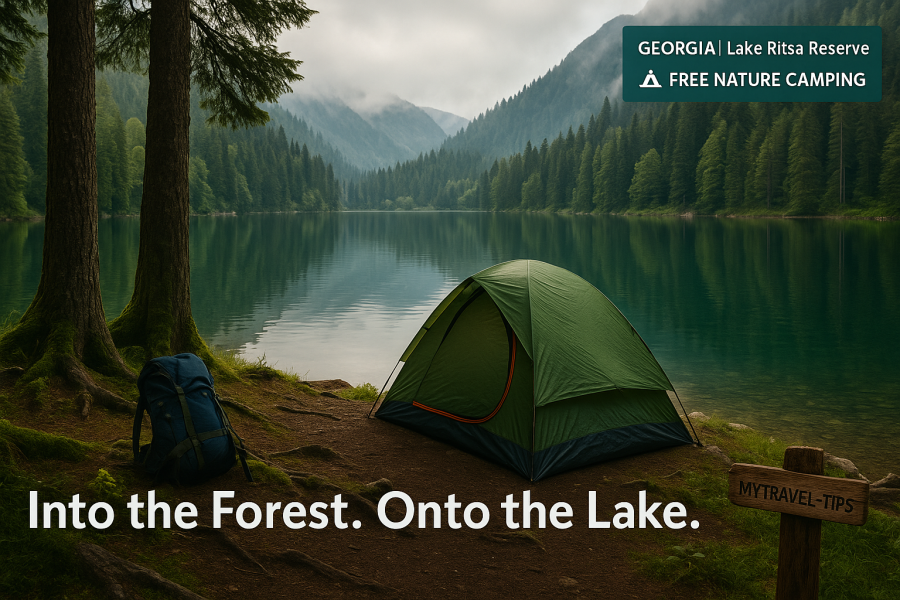
Deep within the Caucasus mountains of European Georgia, Lake Ritsa National Reserve offers one of the wildest and most beautiful free camping zones in Eastern Europe. Surrounded by fir forests and alpine ridges, the lake’s turquoise waters make this a tranquil base for off-grid nature lovers.
- Location: Abkhazia region, accessible via Zugdidi and Ritsa road
- Access: Public transport to Ritsa checkpoint, then hike or drive
- Best For: Forest campers, photographers, alpine trekkers
- Camping Status: Free camping permitted in non-restricted buffer zones
While parts of the reserve are protected and off-limits, several lakeside clearings and forest glades allow tent camping legally for 1–2 nights. There’s no phone signal or services — just wild nature, clean mountain air, and occasional bear sightings.
💡 Travel Tip: Bring your passport — entry to Abkhazia region may require ID checks. Camp only in permitted zones to avoid fines from reserve rangers.
3. Pindus National Park, Greece
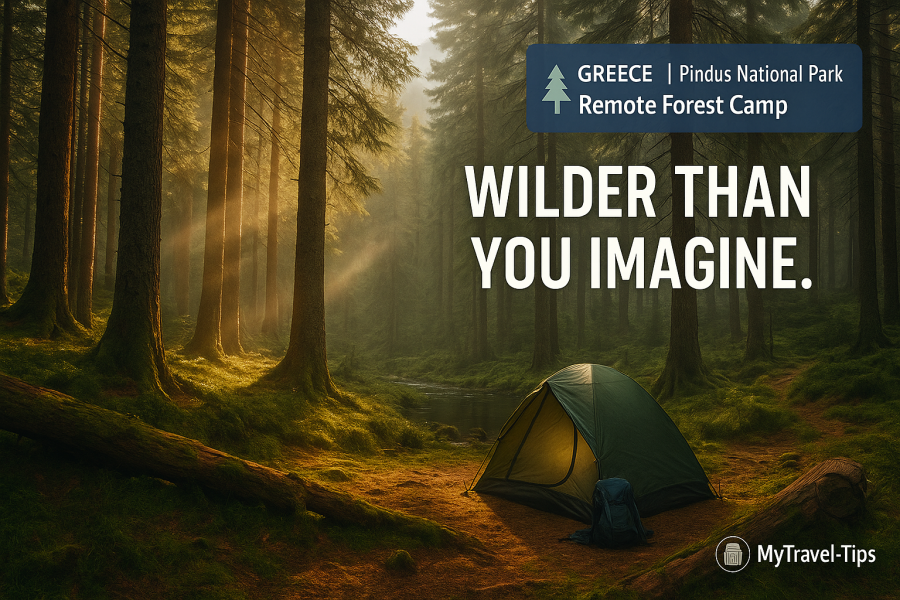
Known as the “Valia Kalda” wilderness, Pindus National Park in northern Greece is one of the most remote and untouched ecosystems in the Balkans. With its dense forests, alpine streams, and wildlife corridors, this park is a top spot for discreet wild camping in Europe — perfect for those seeking silence and seclusion.
- Location: Epirus region, near Metsovo and Grevena
- Access: Trailheads from Perivoli village or Smixi road
- Best For: Wilderness lovers, solo hikers, wildlife spotters
- Camping Guidelines: Unofficial wild camping tolerated outside core zones, max 1–2 nights
While Greece doesn’t formally allow wild camping, enforcement is low in remote national parks like Pindus — especially when campers follow Leave No Trace principles. Expect no amenities, deep silence, and possibly wolves or bears in the distance.
💡 Travel Tip: Avoid open fires. Rangers may patrol in summer due to wildfire risk — a lightweight gas stove is a better choice.
2. Rila Mountains, Bulgaria
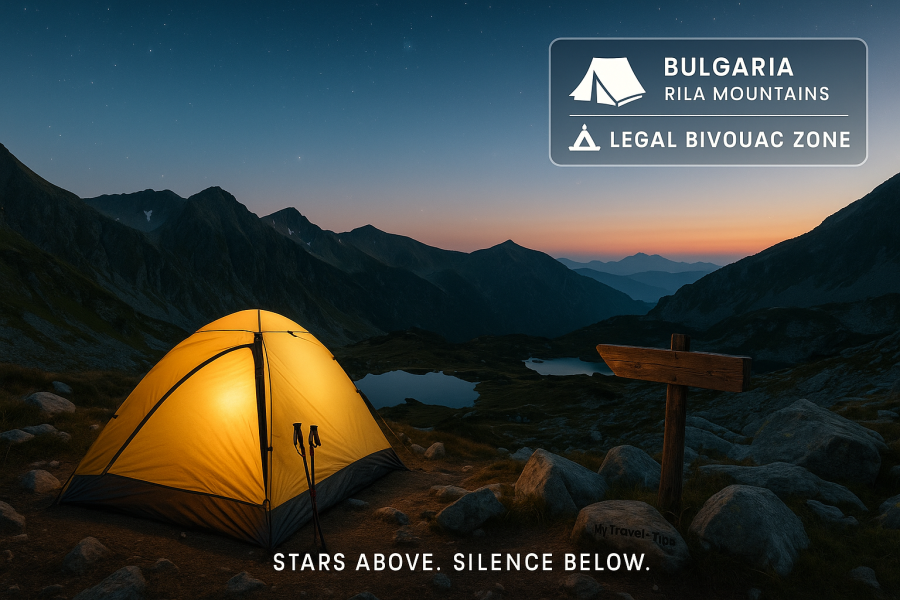
Bulgaria’s highest mountain range, the Rila Mountains, is a paradise for high-altitude wild camping — offering glacial lakes, dense pine forests, and panoramic trails. This area includes the famous Seven Rila Lakes, and is part of the broader Rila National Park where bivouac camping is permitted under certain conditions.
- Location: Southwest Bulgaria, near Sapareva Banya and Borovets
- Access: Trailheads from Panichishte, Malyovitsa, or Rila Monastery
- Best For: Trekking groups, alpine campers, long-distance hikers
- Camping Rule: Tents allowed above 2,000m for 1-night bivouac stays
Although camping near popular lakes is regulated, many less-visited ridges and valleys allow peaceful overnight stays for self-sufficient travelers. The stargazing here is spectacular, with zero light pollution above the treeline.
💡 Travel Tip: Camp at least 100m from lakes and rivers, as per park rules. A GPS map is essential — many trails are unmarked or change seasonally.
1. Jotunheimen National Park, Norway
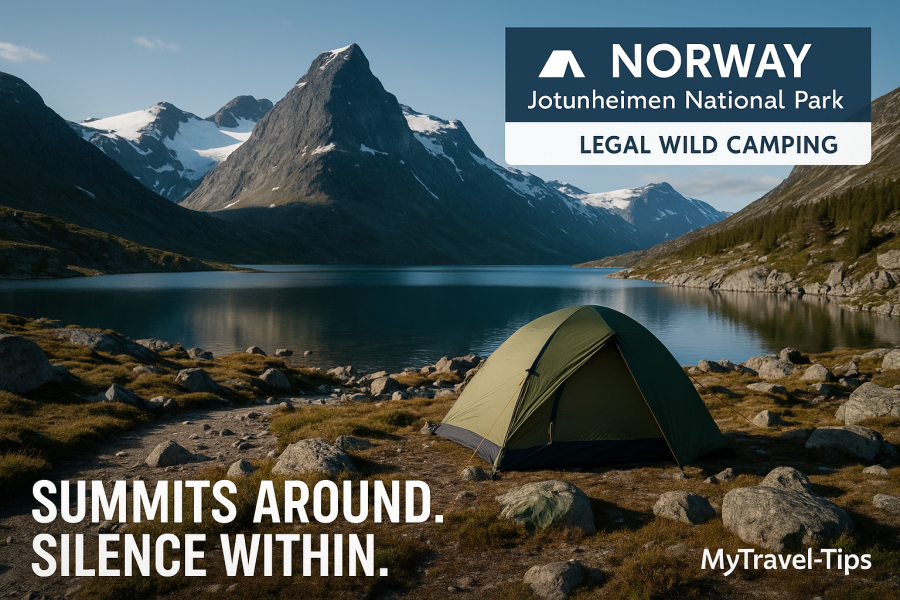
Towering above the clouds in southern Norway, Jotunheimen National Park is home to Scandinavia’s highest peaks — and arguably the most majestic wild camping in Europe. Thanks to Norway’s Right to Roam (Allemannsretten), you can legally camp almost anywhere in this alpine wonderland for free.
- Location: Innlandet County, central Norway
- Access: Trailheads from Lom, Gjendesheim, or Leirvassbu
- Best For: Hardcore trekkers, glacier hikers, summit seekers
- Camping Law: Legal on unfenced land for 2 nights, min. 150m from buildings
Whether you camp beside emerald lakes like Gjende, under the peaks of Galdhøpiggen, or along multi-day trails like Besseggen Ridge, the experience here is raw and powerful. Water is drinkable from streams, but weather can change rapidly — so come prepared.
💡 Travel Tip: Use public mountain huts as emergency shelters if storms hit. And yes — sunrise over Gjende Lake from your tent is unforgettable.
Final Tips + Conclusion
From Arctic beaches to Mediterranean forests, Europe’s wild camping spots are as diverse as they are unforgettable. Whether you're pitching a tent in coastal road trip paradises or hiking into the Alps with your gear, free camping offers not just a place to sleep — but a deeper connection to the land.
But with this freedom comes responsibility. Always respect the local camping laws, practice Leave No Trace, and avoid camping in ecologically sensitive areas. Some regions tolerate wild camping, while others enforce strict rules — especially in tourist-heavy or protected zones.
- Check rules for each country or park before setting up camp
- Camp late, leave early — and don’t stay longer than 1–2 nights
- Carry out all waste, including toilet paper and food scraps
- Use a gas stove — open fires are often banned
- Stay 150–200m away from private homes and cultivated land
🌍 Planning more low-cost adventures? Don’t miss our guide to Backpacking Europe on a Budget and the Top 10 Hidden Villages in Europe for authentic, wallet-friendly travel.
Whether you’re in a hammock under Swedish pines or watching the aurora from a Norwegian ridge, free camping is more than a budget hack — it’s freedom. Just you, nature, and the sound of the wild.



